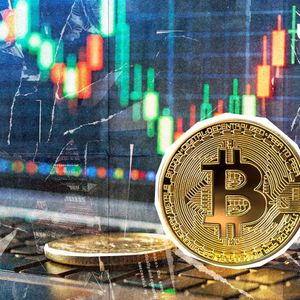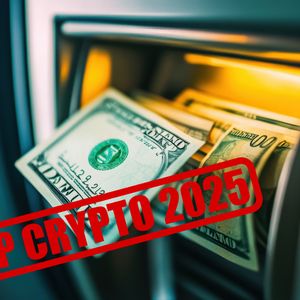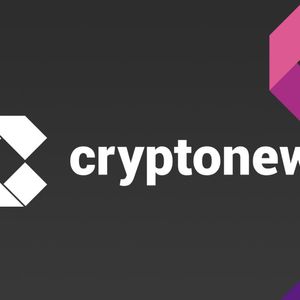The adoption of XRP by financial institutions has been slower than expected, raising questions among crypto enthusiasts and financial experts alike. According to insights from All Things XRP , a community-driven account on X, this reluctance may not be rooted in caution but in strategy. The research highlights the parallels between banks’ slow adoption of XRP and their historic resistance to innovations such as credit cards, ATMs, and online banking. The Unfulfilled Promise of XRP XRP, touted as a revolutionary digital asset for cross-border payments, promises to settle transactions in three seconds and reduce fees by up to 60%. It also eliminates the need for pre-funded accounts, offering a significant advantage over the existing SWIFT system, which often takes days to process transactions. Despite these benefits, most banks continue to rely on SWIFT rather than embracing XRP. BANKS LOVE TO MOVE SLOW. But what if it’s not caution—what if it’s strategy? XRP could revolutionize cross-border payments. Yet most banks aren’t using it. Just like they delayed credit cards & online banking… Let’s uncover what’s really going on. pic.twitter.com/4IhB9Fehx3 — All Things XRP (@XRP_investing) May 14, 2025 Ripple, the company behind XRP, has partnered with more than 300 financial institutions worldwide. However, the majority of these institutions use RippleNet without leveraging XRP itself. Notable exceptions include MoneyGram, which has incorporated XRP into its remittance operations. This gap between Ripple’s widespread network and XRP’s limited adoption raises questions about the underlying reasons. Historical Reluctance: A Pattern of Delay Historically, banks have been slow to adopt new technologies, even when these innovations promise significant efficiency gains. Credit cards, ATMs, and online banking—all now integral to modern banking—were initially met with skepticism and slow integration. XRP appears to fit this pattern. The hesitation may not be due to inherent risk aversion but rather a strategic delay as banks prepare to adapt without sacrificing profitability. The Profit Motive: Building Revenue Models One critical factor behind the delay is the need for banks to establish profit frameworks around new technologies. XRP, by significantly reducing cross-border transaction costs and eliminating pre-funded accounts, threatens the revenue streams banks have built around SWIFT and nostro accounts. As such, they are likely using the delay to develop new fee models, custody systems, and strategies to maintain revenue without sacrificing control. Strategic Resistance: Control and Profit Control is a fundamental aspect of banking operations. As seen with JPMorgan’s development of Quorum, banks are not inherently resistant to blockchain technology—they just prefer systems they can control and monetize. The resistance to XRP adoption may, therefore, reflect a desire to develop in-house solutions or retain central control over financial processes. We are on twitter, follow us to connect with us :- @TimesTabloid1 — TimesTabloid (@TimesTabloid1) July 15, 2023 Diversion and Distraction: An Intentional Delay Instead of rushing to adopt XRP, many banks are exploring alternatives such as stablecoins, upgrading the SWIFT network, or conducting blockchain pilot programs that rarely result in full-scale adoption. This measured approach can be seen as a deliberate strategy to buy time while the profit landscape is reshaped. Additionally, the ongoing legal battles surrounding Ripple and XRP in the United States add an element of uncertainty that banks are hesitant to overlook. The Real Risk: Disintermediation The core of the hesitation may lie in the fundamental threat XRP poses: disintermediation. By enabling direct, fast, and low-cost cross-border transactions, XRP could effectively remove the bank’s role as an intermediary. Banks are not merely cautious—they are strategizing to avoid obsolescence while finding ways to remain relevant and profitable. The Asian Perspective: A Glimpse of Adoption Interestingly, the adoption narrative differs significantly in Asia, where some financial institutions, especially in Japan, have already embraced XRP. This regional difference highlights how regulatory clarity and economic context play crucial roles in adoption rates. As the SEC lawsuit against Ripple concludes and regulatory fog dissipates, a similar trend may emerge globally. The Slow Burn of Adoption Ultimately, the reluctance of banks to adopt XRP does not signify a lack of interest but rather a calculated pause. Banks have historically taken time to adapt to revolutionary technologies until they can establish profitable, controlled frameworks. As XRP continues to gain traction, particularly in Asia, and as the legal environment becomes clearer, banks in other regions may begin to follow suit. The adoption curve may be slow, but once it accelerates, those ahead of the trend could reap substantial benefits. Disclaimer : This content is meant to inform and should not be considered financial advice. The views expressed in this article may include the author’s personal opinions and do not represent Times Tabloid’s opinion. Readers are urged to do in-depth research before making any investment decisions. Any action taken by the reader is strictly at their own risk. Times Tabloid is not responsible for any financial losses. Follow us on Twitter , Facebook , Telegram , and Google News The post XRP Threatens SWIFT Market Share: Researcher Uncovers Why Banks Slowly Adopt XRP appeared first on Times Tabloid .



















